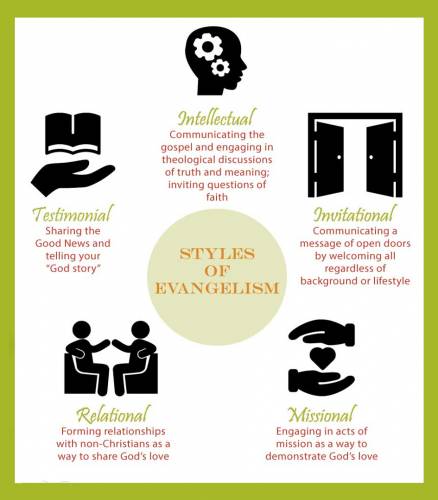How new worshiping communities are reaching the ‘nones’ and ‘dones’
December 21, 2017
New worshiping communities are successfully reaching people who have never attended church and those who had previously given up on the church.
About half of new worshiping community participants were not churchgoers before participating in their new worshiping community. In fact, for 12 percent of participants, this community has been their first foray into any sort of religious gathering.
What are these communities doing to attract these “nones” and “dones”?
Research recently presented by Presbyterian Church (U.S.A.) Research Services at the Society for the Scientific Study of Religion and Religious Research Association meeting in Washington, D.C., indicates that the answer could partially lie in the fact that, although new worshiping communities are just as likely as congregations to engage in evangelism, the emphasis differs.
 Only 31 percent of congregations make frequent use of relational evangelism, compared with 77 percent of new worshiping communities. “There is also a large gap between new worshiping communities and congregations in the use of testimonial evangelism,” said Deb Coe, coordinator for Research Services. “This is particularly interesting, given that sharing the good news and telling your ‘God story’ is a more traditional style of evangelism, but is used by over half of the more nontraditional new worshiping communities.”
Only 31 percent of congregations make frequent use of relational evangelism, compared with 77 percent of new worshiping communities. “There is also a large gap between new worshiping communities and congregations in the use of testimonial evangelism,” said Deb Coe, coordinator for Research Services. “This is particularly interesting, given that sharing the good news and telling your ‘God story’ is a more traditional style of evangelism, but is used by over half of the more nontraditional new worshiping communities.”
Given that new worshiping communities are reaching people who have never attended church and those who had previously given up on the church, it appears that these two methods of evangelism are working. And yet, fewer than one-half of congregations are using these methods.
In a nutshell, new worshiping communities report doing more evangelism, and in more ways, than congregations do.
“It is exciting to see the changing face of the Presbyterian Church (U.S.A.) as Presbyterians of different races, languages and cultural backgrounds leave the church buildings and step out into their communities to build relationships, meet needs and make disciples,” said Vera White, coordinator for 1001 New Worshiping Communities. “God is up to something brand new in the church today. When we look around at our over 400 new worshiping communities, we see new energy and enthusiasm.”
In addition to attracting more “nones” and “dones,” the people in new worshiping communities are younger than the typical Presbyterian, have more language diversity and are more racially diverse. Whereas 46 percent of worshiping community participants are people of color, only 9 percent of the members of PC(USA) congregations are people of color.

Cecelia Armstrong of St. James Presbyterian Church serves communion at The Journey, a campus young adult new worshiping community. (Photo provided by Valerie @ Co. Photography)
“This increased diversity also brings a diversity in evangelism methods,” said Angie Andriot, research associate for Research Services. “New worshiping community leaders of color are more likely to emphasize the importance of evangelism: 30 percent of leaders of color list evangelism as one of their top three priorities, compared to only 8 percent of white leaders.” Additionally, leaders of color are more likely than white new worshiping communities to feel that testimonial evangelism would work within their community and thus are more likely to use this style of evangelism.
“This warrants further research,” Andriot said. “But it could speak to racial differences in the religious history and religious expression of the varying populations being reached.”
Overall, leaders rate building relationships, worshiping and disciple-making as the most important activities for their new worshiping communities.
As one leader put it, “You have to let people be who they are until they are ready to move forward.” In the interviews, many leaders refer to this combined emphasis as incarnational ministry — expressed as leaving the building and meeting people where they are. “As people of Christ, we are called not only to come but also to go,” said one new worshiping community leader.
Most new worshiping communities work together with other organizations and agencies in their community, and many new worshiping communities include a mission focus as a key component of their community’s purpose.
The most common method of outreach is to provide food and shelter for members of the community at large. One leader, in the early stages of starting a new worshiping community, said he uses mission work to create a “stealth explosion of God’s love into the neighborhood.”
Melody Smith, Mission Communications Strategist, Presbyterian Mission Agency
Today’s Focus: 1001 New Worshiping Community
Let us join in prayer for:
PC(USA) Agencies’ Staff
Jennifer Barr, OGA
Andrew Kang Bartlett, PMA
Let us pray:
Gracious God, thank you for how you are using the 1001 New Worshiping Communities movement to inspire your church. We pray that each of us will recognize how we can participate with you in drawing others closer to Jesus. Amen.
Daily Readings
Morning Psalms 18:1-20; 147:12-20
First Reading 2 Samuel 7:1-17
Second Reading Titus 2:11-3:8a
Gospel Reading Luke 1:39-48a (48b-56)
Evening Psalms 126; 62